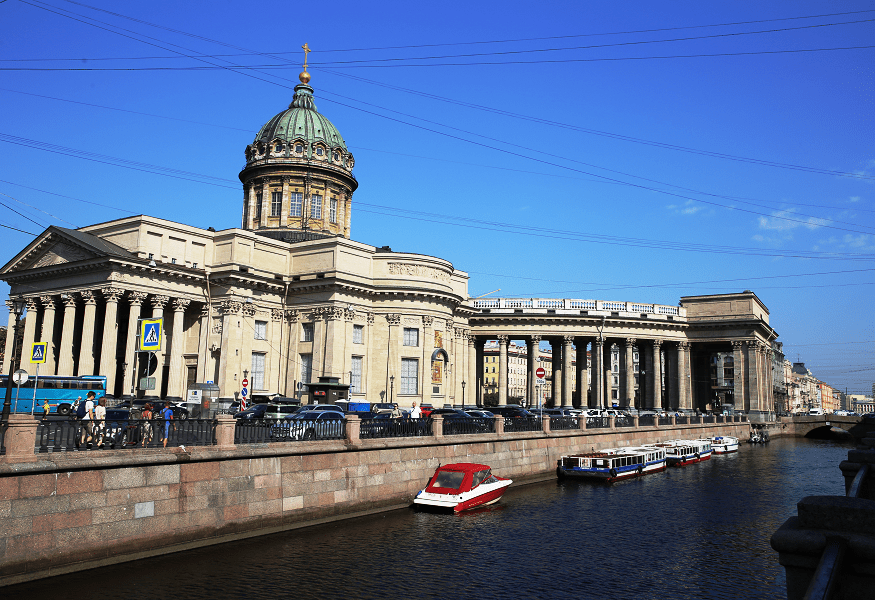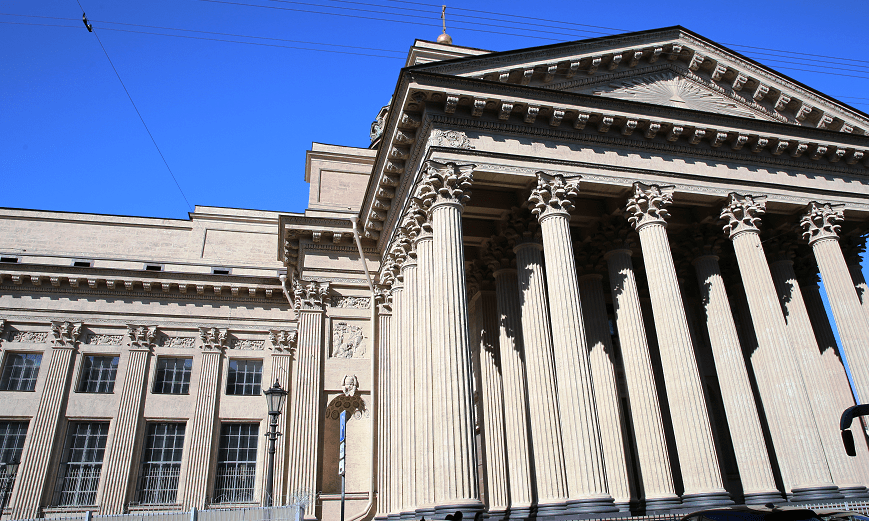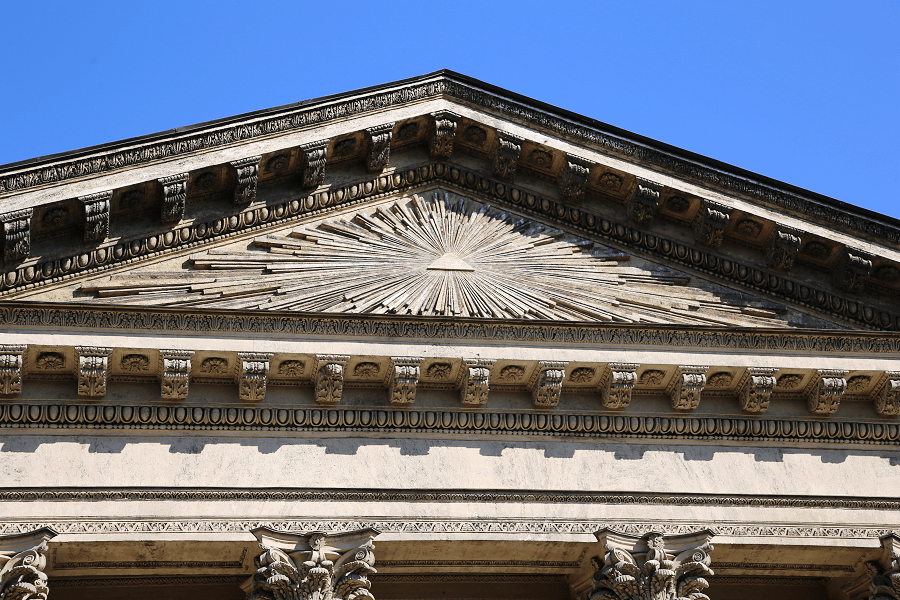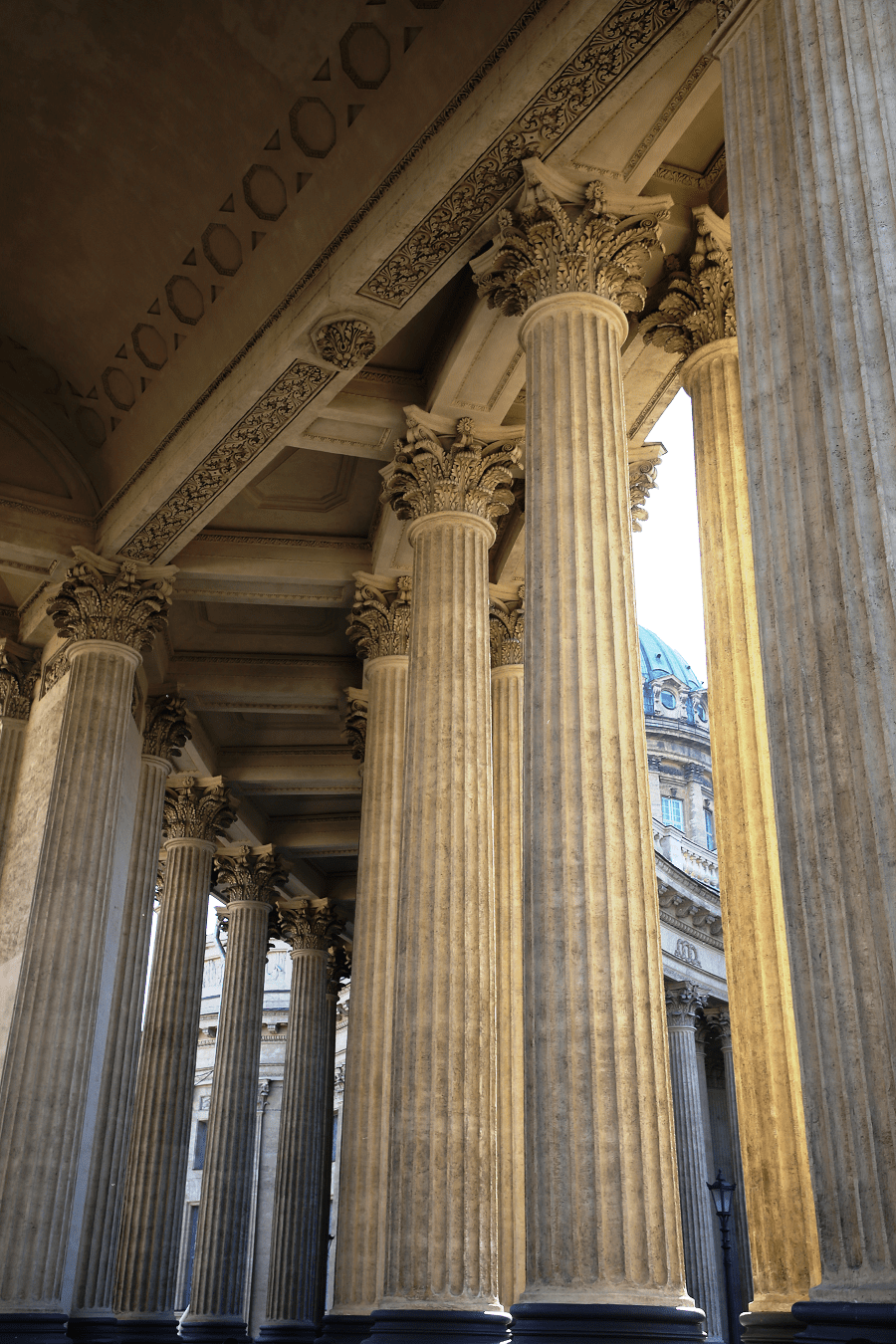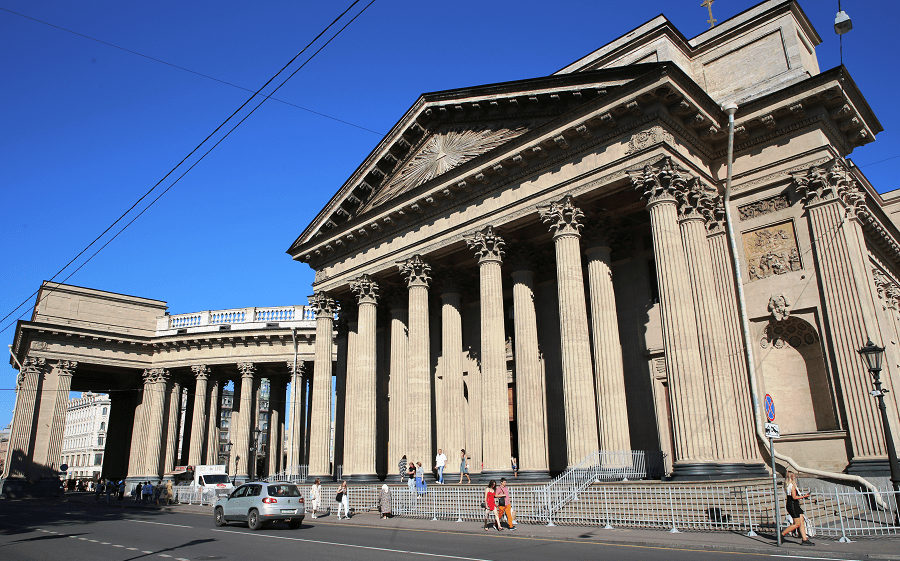Kazan Cathedral (Cathedral of the Kazan Icon of the Mother of God) is one of the largest churches in St. Petersburg. It was built on Nevsky Prospekt in 1801-1811 by architect Andrey Voronikhin in the style of Russian classicism to store the revered list of the miraculous icon of the Mother of God of Kazan.
After the Patriotic War of 1812, it acquired the significance of a monument of Russian military glory. In 1813, commander Mikhail Illarionovich Kutuzov was buried here and the keys to the captured cities and other military trophies were placed.
In 1932 it was turned into the Museum of the History of Religion and Atheism. Since 1991, it has been a functioning temple, coexisting with the museum exposition for several years.
Since 2000 – the Cathedral of the St. Petersburg diocese of the Russian Orthodox Church. Since March 9, 2019, the rector has been Metropolitan Varsonofy (Sudakov) of St. Petersburg and Ladoga.
The cathedral gave its name to Kazanskaya Square, Kazanskaya Street, Kazansky Island in the Neva Delta and Kazansky Bridge at the intersection of Nevsky Prospekt and the Griboyedov Canal (opposite the Singer House).
In plan, the Kazan Cathedral is a Latin cross. The lateral northern facade of the cathedral is facing Nevsky Prospekt, which is adjacent to the grandiose semicircular colonnade of the Corinthian order of 96 columns, set in 4 rows, with a 6-columned portico in the center. The same colonnade was supposed to be made from the southern facade of the cathedral, but it was not implemented. The main entrance to the cathedral is located on the west side, there is also an entrance on the north side of the cathedral.
The facades of the cathedral are lined with grey Pudost stone and were decorated with reliefs and statues. The reliefs were made by: I. P. Martos, I. P. Prokofiev, F. G. Gordeev, the statues – I. P. Martos, S. S. Pimenov, V. I. Demut-Malinovsky.
The interior of the Kazan Cathedral is a majestic 3-nave columned hall (the length of the main nave is 69 m), containing rows of 56 columns made of pink Finnish granite with gilded capitals of the Corinthian order.
Of the bas-reliefs in the interior, only two have survived: Carrying the Cross by F. F. Shchedrin and Taking into Custody by J. D. Rashette, the rest were removed in 1814. The iconostasis designed by K. A. Ton was recreated in the early 2000s.
Nearest metro: Nevsky Prospekt station.



